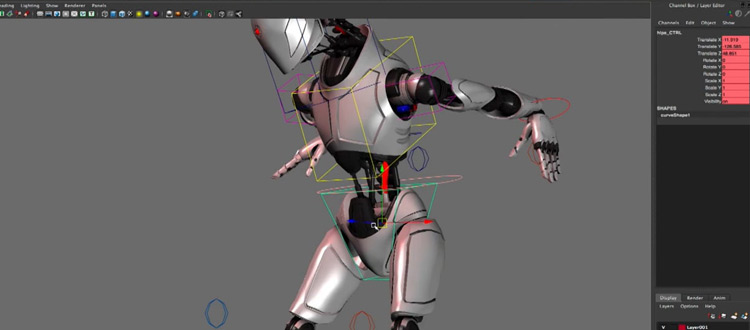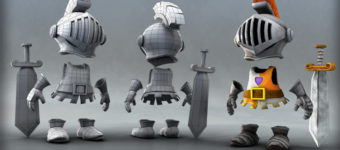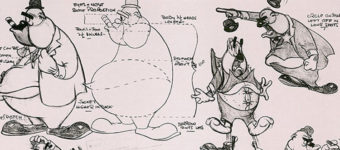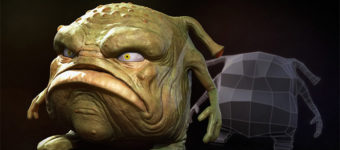
Best 3D Rigging Books For Animation
The rigging process is crucial to modern 3D animation. Creating a great rig is a necessity to create the skeleton of a model so that it can move realistically.
Rigging can be used for animation and gaming. The only trouble is knowing where to start and what to practice.
That’s why I’ve curated this huge list of the best books on 3D rigging. With these books you can learn everything from the absolute basics of rigging to more complex features in modern rigging software—and everything inbetween!
Note: Visual learners may prefer these 3D rigging courses on Pluralsight. They cover all major 3D programs with step-by-step video lessons on rigging for animation.
Rig it Right!


Most 3D animators use Maya for their digital workflow and Rig it Right! can get you started on the right foot.
The book is pretty large totaling just over 300 pages with a grand total of 20 chapters. The book starts small with a beginner’s intro to Maya, rigging, and the animation process.
But you’ll quickly move through lessons covering normal animation features like joints for movement and walk cycles. The animation process will look different for bipeds vs. quadrupeds and this book covers both.
The authors also share rigging techniques using BlendShapes and edge loops along with shortcuts to improve your workflow.
This is one of the best beginner titles to learn rigging in Maya from scratch. As long as you have the software and a willingness to learn you can pick up all the fundamentals from this book.
Body Language: Advanced 3D Character Rigging


Once you get past the basics you’ll naturally want to start rigging your own creations. That’s where Body Language: Advanced 3D Character Rigging comes into play.
This book is super cheap and pretty large(over 400 pages) so it’s a fantastic resource for any 3D rigger. You’ll learn how to design realistic rigs from head to toe with different character styles and body types.
Over a series of exercises you’ll learn how to create believable character rigs that replicate human movement. You’ll learn about deformation techniques and and MEL(Maya Embedded Language) scripting which is a huge part of the Maya workflow.
I recommend this book for semi-experienced beginners who already know their way around Maya. You do not need to be an expert but you should have a decent level of comfort working in the software.
And given a few months of practicing from this book you’ll feel a lot more confident in your rigging abilities.
The Art of Rigging


If you’re looking for an affordable learning resource then The Art of Rigging is a must-have item for your bookshelf.
It comes in full color with visuals and screenshots of the entire process. Each chapter builds upon the last so your knowledge of rigging grows rapidly as you progress. And the book comes with a free DVD with over 30 video tutorials explaining each topic from the book.
The chapters are easy to work through if you have some patience. You’ll also get free Maya working files for each chapter so you can study the end result.
Later in the book you will need to pick up MEL scripting with more technical topics like multidimensional arrays and matrices. But don’t let these words scare you away!
The authors have a very natural writing style that can guide anyone regardless of prior experience.
Animation Methods: Rigging Made Easy


If you’re not big into the techy stuff then Maya can be very intimidating. But Animation Methods: Rigging Made Easy covers Maya in a non-technical way aimed more towards artists who want to learn rigging.
It’s a fairly short book with only 172 pages but it covers a good variety of content. Each chapter follows a unique workflow to teach individual skillsets from scratch.
And since the writing style targets non-technical readers there shouldn’t be much confusion. The author even includes tons of screenshots with arrows & diagrams to explain the Maya interface.
Rigging doesn’t have to be an overly technical process. Once you understand the goal of rigging you’ll just have to practice the software. And this book offers the perfect practice guide for beginners who don’t want to get bogged down in the technical stuff.
3D Advanced Rigging and Deformations


If you already know the basics then you’ll probably want a more advanced rigging book. And my vote goes to 3D Advanced Rigging and Deformations.
It’s a bit dated but it doesn’t rely on any specific software program. The concepts can be applied to any rigging system so the content inside is still just as relevant as ever.
You’ll learn about many advanced topics like realistic skin textures, muscle deformation, and Hollywood insider techniques used by the pros in 3D animation.
Please note this is a very technically advanced book. You should already feel very comfortable rigging and designing characters on your own before working through these exercises.
But what you can learn from this book is astounding and it will prepare you for a job in the VFX/animation industry.
Digital Creature Rigging


3ds Max is another very popular rigging program used in the animation industry. You won’t find as many books on this program but one great book is Digital Creature Rigging by Stewart Jones.
You’ll learn about unique strategies and techniques for creating fierce creatures with the 3ds Max interface. Each chapter focuses on a different technique and you’ll learn how to create dozens of creatures with different bodily features and locomotive styles.
What I like most about this book is the hands-on approach to each chapter. You’ll work through exercises that truly aim to help you understand creature rigging from the ground up.
You do not need to know anything about 3ds Max to get started with this book. Stewart has a great writing style that can connect with any absolute beginner.
This is the perfect resource to delve into creature rigging and it’s one of the few great books teaching 3ds Max for animation.
Death to the Armatures


Another wildly popular program for rigging is Blender. It uses templates like armatures to help with rigging, but they can limit your workflow past a certain point.
In the book Death to the Armatures: Constraint-Based Rigging in Blender you’ll learn how to rig hard-surface objects from scratch without armatures by your side. You’ll learn about locomotive force and use a lot of physics concepts to get the rigging just right.
As you can probably tell this is a fairly advanced book. You should already have skills in Blender and have some comfort with basic rigging.
But the book is pretty long with over 350 pages full of exercises for building real-world objects in motion. And it’s a very affordable guide so it’s a powerful resource for any Blender aficionado.
Animation Methods


The ultimate goal of a video game studio or a 3D animated film team is to create realistic motion from all characters and objects in a production.
This goal falls back to the traditional animation principles which should always be applied to rigging. With Animation Methods you’ll learn how to rig different scenarios in Maya to create the most realistic animations possible.
Each exercise focuses on a different animation type whether it’s a facial expression, a body movement, or even a mechanical object. Later chapters get into the animation industry offering tips for aspiring animations, suggestions for a great demo reel, and support for breaking into the industry.
You should already feel somewhat comfortable rigging on your own before grabbing this book.
Think of Animation Methods as an intermediate rigger’s book. You should have just enough knowledge to practice on your own, and this book fills the gap with more professional concepts that’ll help you land a job in the industry.
Stop Staring


Faces are the most challenging parts of a portrait and it’s the same for 3D animation too. In the book Stop Staring you’ll learn a series of exercises that show how the minor details of a facial expression can make all the difference.
The author Jason Osipa has over two decades of experience working in 3D animation so he knows all the tricks. In this book he teaches the fundamentals of squash & stretch along with manipulation techniques for facial expressions using eyes, cheeks, lips, and other important landmarks.
Stop Staring is currently in its 3rd edition fully updated for the latest technologies of modern 3D animation. Later chapters even cover Python scripting which can help to automate your workflow.
Jason is the perfect author for this book and his years of experience shine through in the writing. If you’re serious about learning animation then you’ll want a copy of Stop Staring on your bookshelf.
3ds Max Projects


This book isn’t strictly about rigging but it does cover the “bigger picture” of 3D modeling. 3ds Max Projects is a huge workbook with 320 pages of exercises and 5 different authors contributing their experience.
You’ll learn how to model, rig, and design textures for anything you can imagine. People, animals, vehicles, objects, and custom environmental effects like fog or grass.
The rigging chapters are pretty detailed but this is really a book on all the major aspects of 3D animation. It’s far from perfect, but it is one of the better 3ds Max books on the market.
So if you’re a 3ds Max lover pursuing a career in animation then this book will give you a big leg up on the competition.
I hope there’s at least one book in this collection that can help improve your rigging skillset. It’s not a super easy concept to grasp at first, but with practice it gets a lot clearer and can even be fun!
If you’re a complete novice at rigging then you’ll need to pick a book that suits your software of choice. My recommendation is Rig it Right! for Maya but you can always search for related books on Blender and 3ds Max.
The important part is picking a program and sticking with it. You can always learn others as you go but I find it’s best to master one program and really learn it all inside & out.


![Free Maya Rigs For [year]: The Ultimate Collection Maya rig example animation](https://cdn.conceptartempire.com/images/12/6437/00-featured-maya-rigs-340x150.jpg)









